
A boarding school is a school where pupils live within premises while being given formal instruction. The word "boarding" is used in the sense of "room and board", i.e. lodging and meals. As they have existed for many centuries, and now extend across many countries, their functioning, codes of conduct and ethos vary greatly. Children in boarding schools study and live during the school year with their fellow students and possibly teachers or administrators. Some boarding schools also have day students who attend the institution by day and return off-campus to their families in the evenings.
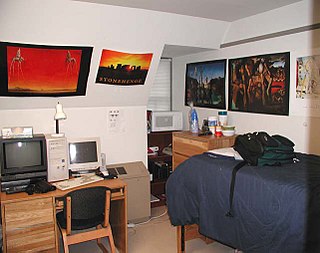
A dormitory is a building primarily providing sleeping and residential quarters for large numbers of people such as boarding school, high school, college or university students. In some countries, it can also refer to a room containing several beds accommodating people.
Bruno Bettelheim was an Austrian-born psychologist, scholar, public intellectual and writer who spent most of his academic and clinical career in the United States. An early writer on autism, Bettelheim's work focused on the education of emotionally disturbed children, as well as Freudian psychology more generally. In the U.S., he later gained a position as professor at the University of Chicago and director of the Sonia Shankman Orthogenic School for Disturbed Children, and after 1973 taught at Stanford University.

Grier School is an independent all-girls college-preparatory boarding school in Tyrone, Pennsylvania in the United States. The school is located near the Pennsylvania State University, in the heart of the Appalachian Mountains and currently enrolls 296 students in grades 7 to 12.

Lake Forest Academy is a co-educational college preparatory school for boarding and day students in grades 9 through 12. The school is located on the North Shore in Lake Forest, Illinois, United States, about 30 miles north of Chicago. As of the 2019–2020 school year, the school enrolled 435 students, with the students coming from 13 states and 35 countries. This school is among the most selective boarding schools in the United States. The current head of school is Christopher O. Tennyson. The school is accredited by the National Association of Independent Schools (NAIS), Independent Schools Association of the Central States (ISACS), and the Secondary School Admission Test Board (SSATB).
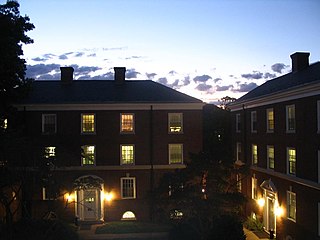
Brown College at Monroe Hill is one of three residential colleges at the University of Virginia. Originally named Monroe Hill College, Brown opened in 1986 as the first modern residential college at the University of Virginia. It was renamed Brown College at Monroe Hill in recognition of the endowment donated by the Brown family in 1994. The college is led by James Coan principal, and John T. Casteen IV, Director of Studies. A number faculty fellows from many departments and schools of the university maintain close ties to the college.
Balch Hall is the only remaining all-female dormitory on the North Campus of Cornell University. Technically, Balch Hall consists of four eighty-student halls, hence the more accurate name the Balch Halls, which has fallen out of use. Balch Hall is open only to female freshman and is divided into sections, known as units, each with a Residential Advisor who helps the new students acclimate themselves with the campus. This dorm is unique due to its old fashioned design as each room has a personal sink, or shares a sink with one other room. The dorm also houses the Carol Tatkon Center in which the residents can borrow movies, games, baking pans and other similar objects.

Wilderness therapy, also known as outdoor behavioral healthcare, is a treatment option for behavioral disorders, substance abuse, and mental health issues in adolescents. Patients spend time living outdoors with peers. Reports of abuse, deaths, and lack of research into efficacy have led to controversy.
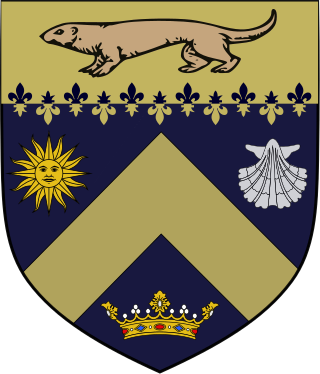
Sorin Hall, also known as Sorin College, is the oldest of the 32 Residence Halls on the campus of the University of Notre Dame and one of the 17 male dorms. It is named after Fr. Edward Sorin, C.S.C., the founder of Notre Dame. Sorin is located directly north of Walsh Hall and is directly south of the Basilica of the Sacred Heart. Sorin houses 143 undergraduate students. Sorin Hall is, along with other buildings on the Main Quad of Notre Dame, on the National Register of Historic Places. Sorin Hall was the first Notre Dame residential hall established as such, although St. Edward's Hall is housed in an older building.
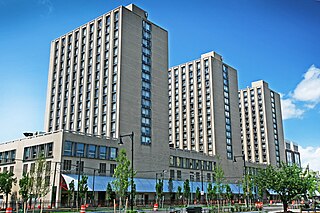
The Boston University housing system is the 2nd-largest of any private university in the United States, with 76% of the undergraduate population living on campus. On-campus housing at BU is an unusually diverse melange, ranging from individual 19th-century brownstone town houses and apartment buildings acquired by the school to large-scale high-rises built in the 60s and 2000s.
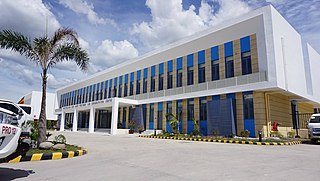
A residential treatment center (RTC), sometimes called a rehab, is a live-in health care facility providing therapy for substance use disorders, mental illness, or other behavioral problems. Residential treatment may be considered the "last-ditch" approach to treating abnormal psychology or psychopathology.
There are currently 33 undergraduate residence halls at the University of Notre Dame, including 32 active residence halls and Zahm Hall, which serves as a transition dorm when residence halls undergo construction. Several of the halls are historic buildings which are listed on the National Register of Historic Places. Each residence hall is single-sex, with 17 all-male residence halls and 15 all-female residence halls. Notre Dame residence halls feature a mixed residential college and house system, where residence halls are the center of the student life and some academic teaching; most students stay at the same hall for most of their undergraduate studies. Each hall has its own traditions, events, mascot, sports teams, shield, motto, and dorm pride. The university also hosts Old College, an undergraduate residence for students preparing for the priesthood.
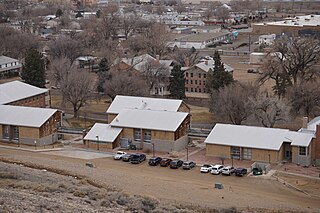
Navajo Preparatory School is a college preparatory school located in Farmington, New Mexico. The school is fully sanctioned by the Navajo Nation since 1991 when the previous Navajo Academy closed due to lack of funding. The campus is currently undergoing a remodelling project for the past few years that includes new dormitories, classrooms, and an athletic sports complex. The school colors are black, turquoise, yellow, and white which represent the four seasons in Navajo Culture and the mascot is the eagle. The previous school colors for Navajo Mission and Navajo Academy were red, white, and blue. In 2021- 2022 school year, the school color will go back to red, white, and blue.

CEDU Educational Services, Inc., known simply as CEDU, was a company founded in 1967 by Mel Wasserman and associated with the troubled teen industry. The company owned and operated several therapeutic boarding schools licensed as group homes, wilderness therapy programs, and behavior modification programs in California and Idaho. The company's schools have faced numerous allegations of abuse. CEDU went out of business in 2005, amid lawsuits and state regulatory crackdowns.

Housing at the University of Chicago includes seven residence halls that are divided into 48 houses. Each house has an average of 70 students. Freshmen and sophomores must live on-campus. Limited on-campus housing is available to juniors and seniors. The university operates 28 apartment buildings near campus for graduate students.

The Uses of Enchantment: The Meaning and Importance of Fairy Tales is a 1976 book by Bruno Bettelheim, in which the author analyzes fairy tales in terms of Freudian psychoanalysis. The book has been a subject of controversy regarding possible plagiarism.
Bertram Joseph Cohler was an American psychologist, psychoanalyst, and educator primarily associated with the University of Chicago, the Chicago Institute for Psychoanalysis, and Harvard University. He advocated a life course approach to understanding human experience and subjectivity, drawing on insights from psychoanalysis, developmental psychology, personology, psychological anthropology, narrative studies, and the interdisciplinary field of human development. Cohler authored or co-authored over 200 articles and books. He contributed to numerous scholarly fields, including the study of adversity, resilience and coping; mental illness and treatment; family and social relations in normal development and mental illness; and the study of personal narrative in social and historical context. He made particular contributions to the study of sexual identity over the life course, to the psychoanalytic understanding of homosexuality., and to the study of personal narratives of Holocaust survivors. Other than his graduate study at Harvard, Cohler spent his career at the University of Chicago and affiliated institutions, where he was repeatedly recognized as an educator and a builder of bridges across disciplines. He was treated for esophageal cancer in 2011, but became ill from a related pneumonia and died on 9 May 2012 not far from his home in Hyde Park, Chicago.

Cushing House is a four-story dormitory on Vassar College's campus in the town of Poughkeepsie, New York. A response to freshmen overcrowding, the college's Board of Trustees hurried the Allen & Collens-designed building, named for college librarian and alumna trustee Florence M. Cushing, to construction and completion in 1927. Cushing was originally designed as eight smaller houses with euthenic principles in mind, but ended up as a single U-shaped dormitory in the Old English manor house style with Jacobean interior furnishings.
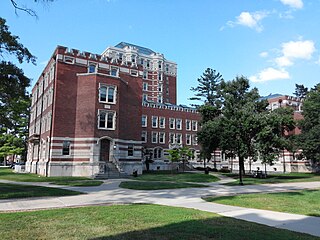
Jewett House is a nine-story Tudor-style dormitory on the campus of Vassar College in the town of Poughkeepsie, New York. Built in 1907 to accommodate increasing demand for residential space, the dorm was designed by Vassar art professor Lewis Pilcher of the architectural firm Pilcher and Tachau. Early reviews looked unfavorably upon Jewett, even dubbing it "Pilcher's Crime" and by 2002, a host of issues plagued the dorm, leading to a $21 million renovation. Up to 195 students of any gender or class year may live in Jewett, which has been purported to be haunted by several different ghosts during its existence.
Fritz Redl was an Austrian-American child psychoanalyst and educator.



















